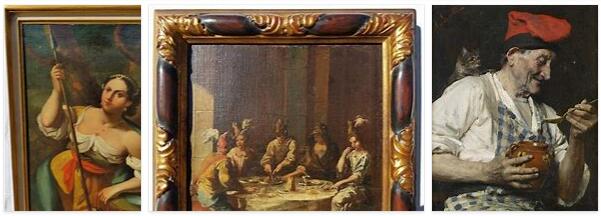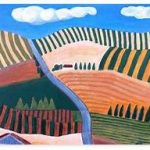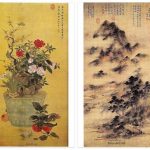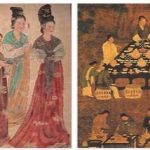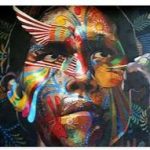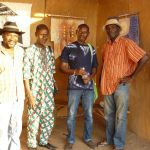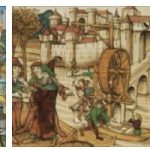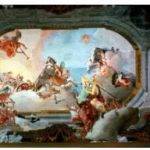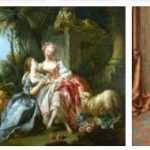According to ACEINLAND, the European aspirations which, from Futurism onwards, had animated the liveliest currents of Italian art, found, in the historical climate of the post-war period, the most propitious conditions for their development. This was favored not only by the intensification of international exchanges, but also by the stimulating activity of a responsible and informed critic, by the exhibitions of foreign masters organized in Venice by the Biennale, in Rome by the National Gallery of Modern Art, in Milan and Turin by local authorities and, finally, by the rapid development, especially in northern Italy, of collecting and an active art market connected with the major European and American centers of the art trade. Contemporary art also became a subject of scientific study, especially in the University of Rome, thanks to Lionello Venturi, while research and study centers for modern urban planning and architecture were formed in Rome, mainly thanks to Bruno Zevi, and in Milan. Critical essays of notable importance on world art movements were beginning to appear in art history magazines such as Commentaries, Paragone, Selearte, etc., and of architecture, such as Architettura and Casabella. Immediately after the war, to prevent Italian art from falling into the low academicism and provincialism that had been largely favored by fascism, the artists who had long since oriented their research in a European sense gathered in a group called “Nuova Secessione Artistic “. It was joined by men of different backgrounds and directions, such as the painters R. Birolli, B. Cassinari, R. Guttuso, E. Morlotti, A. Pizzinato, G. Santomaso, E. Vedova and the sculptors Leoncillo and A. Viani. The group then expanded with the name of “New Front of the Arts” and presented itself in 1948, supported by G. Marchiori, at that memorable Venice Biennale, which appeared as the expression of a new and full participation of Italy in the world art culture. Among others, the painters A.
Within the Front, which supported the need for an art “committed” to the historical and social situation but did not have a precise formal program, two divergent tendencies immediately emerged: a “realistic” one, headed by Guttuso and aimed above all at question of social and political contents, and a formalistic and on the whole “abstractionist”, which posed the problem of a profound renewal of expressive modes. The “socialist realism” which, in addition to Guttuso, had its main representatives in G. Zigaina, E. Treccani, G. Mucchi, A. Bergonzoni and, although in an autonomous position, Carlo Levi, first proposed the direct solicitation of feelings popular and the return to national traditions “, understood however as excited and controversial realism; later, especially through the work of R. Vespignani and others, he instead went towards an expressionism that was bitterly critical of bourgeois society. The so-called abstractionist currents, on the other hand, turned to the search for a structural renewal of the form and therefore to the revision of the figurative tradition: without decisively renouncing the program of a moral position (evident above all in Vedova’s “cycle of protest”), they moved the problem on the level of values, that is of the way of configuring reality, natural or historical, in the forms of art understood as forms of consciousness. The group of “abstractionists” (although the term has been corrected in “abstract-concrete” to allude to the constant presence of a problem of reality) exhibited at the 1952 Biennale, presented by L. Venturi, with the name of “Eight Italian painters”. The group included Birolli, Corpora, Morlotti, Santomaso, Turcato, Vedova, Afro, M. Moreni; but sculptors such as Viani, Franchina, Mirco, P. Consagra, U. Mastroianni and others also included in the same programmatic line. Even in the context of the “Eight”, however, the orientations tend to diverge: in the sense of a deepening of the pictorial “language” from Impressionism onwards with Birolli and Corpora, of an expressionistic accentuation of the sign and of the material with Vedova, of a free and more abstract formal research with Afro and Turcato, of a return to emotion and sentiment with Morlotti.
At the same time, the search for pure abstraction developed, which even before the war had been brought forward, mostly in a constructivist sense, by E. Prampolini, A. Soldati, O. Licini, M. Reggiani, A. Magnelli, who now they are rightly recognized as precursors and masters. Having overcome the constructivist theme of geometric abstraction, the research branched out: G. Capogrossi, until 1949 a figurative and tonal painter, evolved in the direction of a sign painting, T. Scialoja oriented himself towards a painting of gesture, others still, approaching to the ways of the “Informel”, they point to a painting of matter. A. Burri stands out for the originality and extreme lucidity of his compositions obtained with the most varied materials: bags, sheets, wood and burnt paper; L. Spazzapan, who had participated in the first avant-garde movements, concludes his work with a clear decline towards informal abstractionism; L. Fontana, painter and sculptor, with other Milanese artists such as G. Dova and R. Crippa, forms the group known as the “spatialists”; already figurative artists, such as F. Pirandello, M. Mafai, E. Paulucci and others, also evolve towards a simplification of the vision that resolves every emotional or narrative element in the sign and color.
While the “masters” of the previous generation, such as G. Morandi in painting and M. Marini and G. Manzù in sculpture, remain substantially linked to the initial themes of their style, but deepening and refining the qualitative values, and the “middle generation “now in full maturity, it is affirmed also outside Italy, new currents are emerging, essentially aimed at the development of the theme of image-matter. Increasingly fragmented, these currents tend to highlight individual positions against the background of a common situation. With the exception of P. Dorazio, who faces the problem of space-surface in almost scientific terms, and M. De Luigi, who elaborates a space-light identity.
Not dissimilar are the developments in architecture. The “rationalist” currents, so bitterly opposed during Fascism for their social assumptions and their relationship with European currents, assert themselves after the war, especially in Milan. In Rome, on the other hand, an “organic” trend develops, based on the resumption of the formal theme of FL Wright. The same exponents of the first “rationalism” such as F. Albini and Italy Gardella, recognize the need to overcome the initial schematism and open their research to a functionalism less conditioned to the geometric factor. The problem of rebuilding bombed cities and responding to social needs engages the two trends in the urban planning question: to whose clear theoretical approach (but often contrasted on a practical level) especially L. Piccinato, L. Quaroni, G. Astengo contribute. Remarkable solutions, also in terms of aesthetic values, have been achieved especially in the new working-class neighborhoods of the Ina-Casa while, in the center of the city, unbridled building speculation has unfortunately often led to the ruin of historic environments and the rise of falsely modern buildings.. Notable results have been achieved, in the field of public buildings, with the Termini Station in Rome; in the field of industrial construction with the complexes of the Olivetti Company in Ivrea and Pozzuoli; in the field of private building by Albini, Gardella, EN Rogers, L. Barbiano di Belgioioso, E. Peressutti, Scarpa, L. Moretti, M. Ridolfi, L. Cosenza, G. Samonà and others.
Although not supported by the necessary didactic apparatus, the question of “industrial design” has had, also in Italy, notable developments, reaching in some cases valid results on an international level: the car bodies of Pinin Farina or the type and sewing machines designed by Nizzoli are to be considered fully realized works of art. In the same sectors of graphics and, in general, of industrial production, the values achieved, even if they do not mark sensational innovation, nevertheless align themselves with the level of European and American “quality” production. The exhibitions of the Milan Triennale and the annual awards of the “Compasso d’Oro” have contributed to the development of aesthetic culture in this field.
